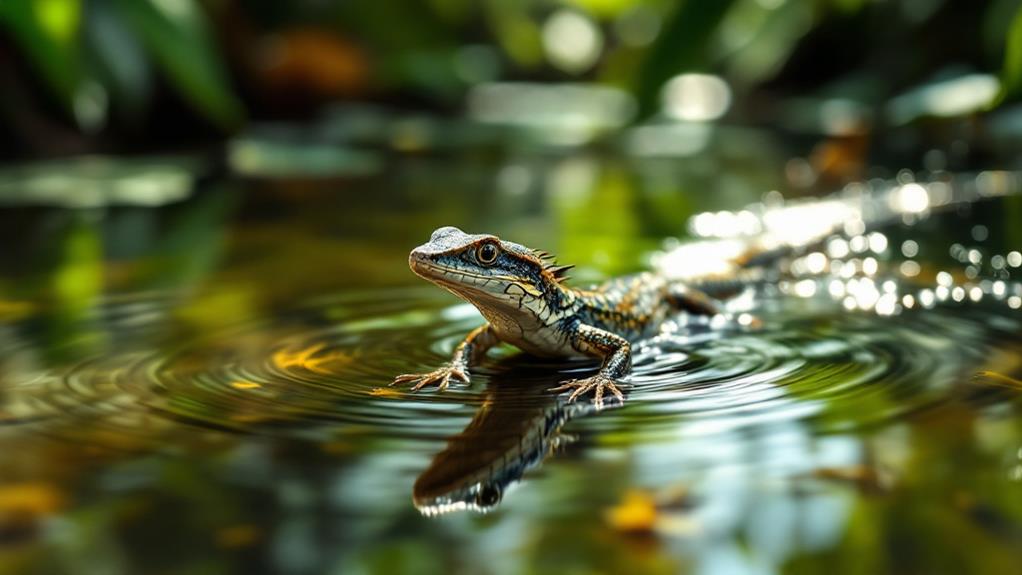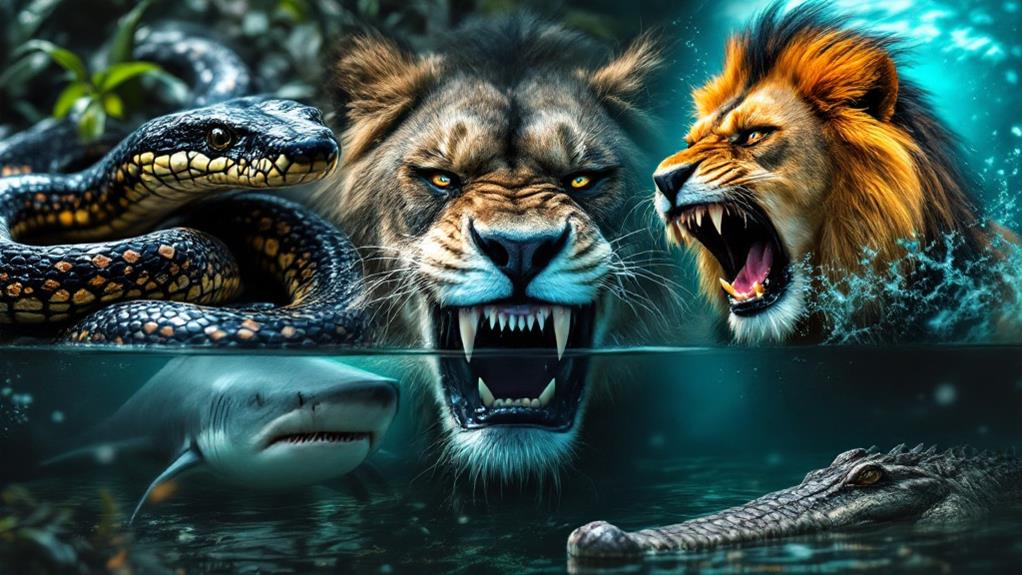How Can Some Animals Walk on Water? The Science Behind This Incredible Ability
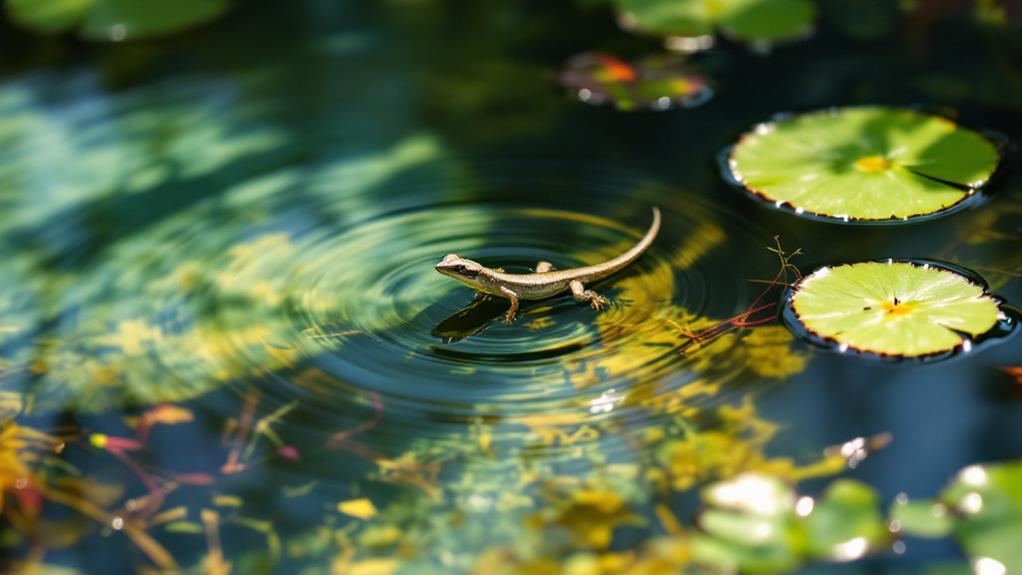
You might be amazed at how some animals, like water striders and basilisk lizards, can walk on water. This incredible feat happens thanks to surface tension, hydrophobicity, and unique anatomical features. Surface tension creates a strong "skin" on the water, supporting lightweight creatures. Hydrophobic surfaces repel water, reducing drag and increasing buoyancy. Specialized features, such as webbed feet and tiny hairs, distribute weight and trap air. Basilisk lizards use rapid leg movements to stay above water, creating air pockets under their feet. Each adaptation is a marvel of natural engineering, and there's so much more to uncover about this phenomenon.
Surface Tension Explained
Surface tension is a fascinating phenomenon that allows certain animals to seemingly defy gravity and walk on water. When you observe creatures like water striders skimming across a pond, you're witnessing surface tension in action. This occurs because of the cohesive forces between liquid molecules. Fundamentally, the molecules at the surface of the water are pulled together more tightly than those below, creating a kind of "skin" on the water's surface. This invisible layer is strong enough to support light objects and small animals, letting them move across without breaking through.
Imagine dropping a paperclip gently onto water. Thanks to liquid cohesion, the paperclip can float despite being denser than water. The same principle helps animals like the basilisk lizard, nicknamed the "Jesus Christ lizard," to dart across water surfaces. When these animals make contact with the water, the surface tension resists their weight just enough to prevent them from sinking, provided they move quickly enough or spread their weight over a larger area.
The Role of Hydrophobicity
While surface tension plays a key role in allowing animals to walk on water, hydrophobicity also greatly contributes to this seemingly miraculous feat. Hydrophobicity refers to the water repellency of a surface, which is essential for animals that need to stay afloat. When you think about how these creatures manage this trick, consider their molecular structure. Many animals that walk on water have surfaces or body parts with a unique molecular structure that repels water, reducing the contact area between them and the water.
In essence, their bodies are designed to avoid getting wet. This water repellency is primarily due to the presence of tiny structures or coatings that create a kind of microscopic barrier against moisture. Imagine the way oil beads up on water due to its hydrophobic nature; likewise, these animals' bodies can repel water, helping them stay on the surface.
When water can't easily adhere to their bodies, it reduces drag and helps maintain buoyancy. This interaction between their hydrophobic surfaces and the water enhances their ability to skim or dash across liquid bodies, making it a vital component of their water-walking capabilities.
Unique Anatomical Features
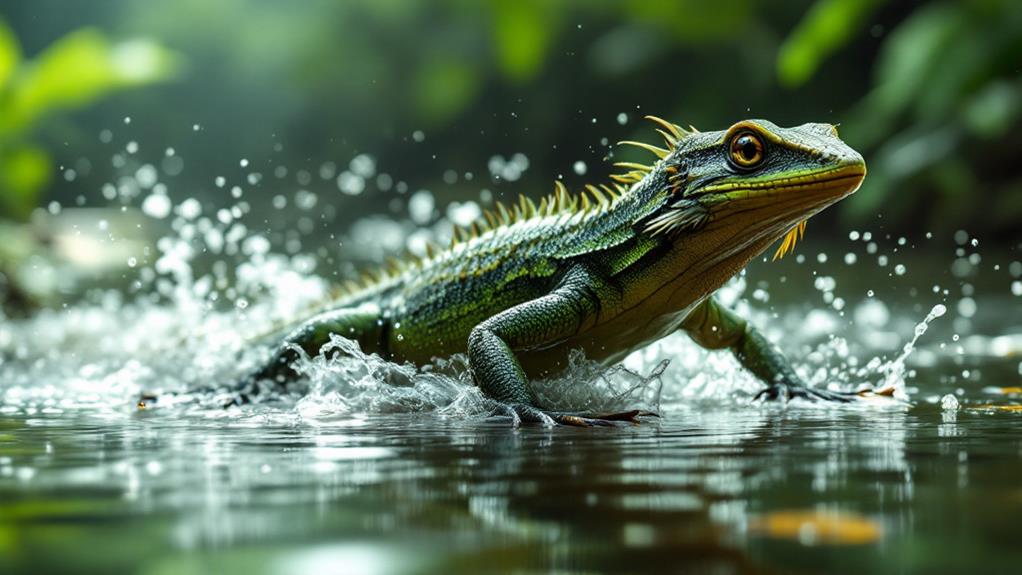
Often, animals that walk on water have evolved unique anatomical features that make this extraordinary ability possible. When you look closely at these creatures, you'll notice that webbed feet are a common trait. This adaptation increases the surface area of the feet, allowing the animal to distribute its weight more evenly across the water's surface. For example, the basilisk lizard, often called the "Jesus lizard," can sprint across water by rapidly slapping its webbed feet against the surface, creating pockets of air that help support its body.
In conjunction with webbed feet, some animals possess specialized hairs that contribute to their water-walking prowess. These hairs, often found on the legs or undersides of the animals, are incredibly fine and densely packed. They trap air, enhancing buoyancy and minimizing the contact with water, which reduces drag. Insects like certain spiders and beetles use these specialized hairs to stay afloat and move gracefully across the water without sinking.
Water Striders' Techniques
Water striders exemplify another fascinating approach to walking on water. As you observe these incredible insects, you'll notice they glide effortlessly across the surface, a feat made possible by their specialized adaptations. Water strider locomotion is all about maximizing surface tension. Their long, slender legs are covered with tiny hairs that trap air, enhancing insect buoyancy and preventing them from sinking. This clever adaptation allows them to distribute their weight evenly across the water's surface.
To move, water striders use a rowing motion. You can think of it like how you might paddle a kayak. By pushing back and forth against the water, they generate propulsion, allowing them to move quickly and efficiently. The middle pair of legs does most of the work, while the front and rear legs help with steering and balance. This synchronized movement is key to their success in skimming across ponds and streams.
Furthermore, water striders take advantage of the water's natural properties. By exploiting surface tension, they can stay afloat without breaking through. Their lightweight bodies and unique leg structure make them masters at maneuvering their watery environments. When you watch them, you're witnessing nature's engineering at its finest.
Basilisk Lizards' Sprint
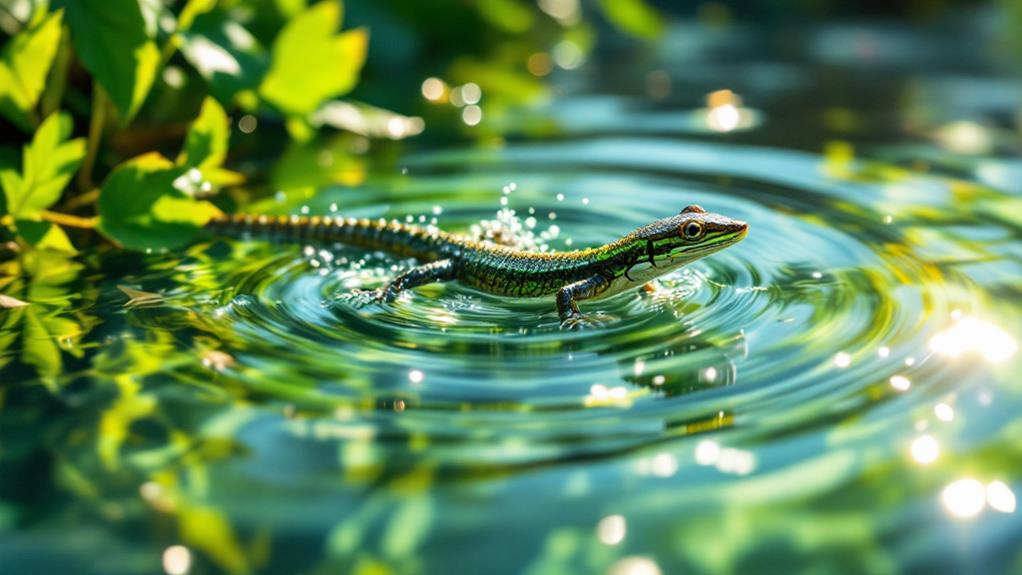
Known for their astonishing ability to dash across water, basilisk lizards, often referred to as "Jesus lizards," captivate anyone who witnesses their sprinting prowess. You might wonder how these remarkable creatures achieve such a feat. It's all about their unique basilisk locomotion and the rapid movement of their legs. When a basilisk lizard senses danger, it propels itself forward using its powerful hind legs.
This rapid movement is key. By striking the water with swift, precise motions, the lizard generates enough force to keep its body above the surface. Its legs move so quickly that they create pockets of air, allowing the lizard to maintain its speed without sinking. You'd be amazed to know that they can run up to five feet per second, making it look effortless.
Their long toes, fringed with scales, help distribute their weight more evenly, enhancing their ability to stay afloat. As you watch a basilisk lizard sprint across a pond, it's truly impressive how its innate biology supports such a mesmerizing spectacle. With each stride, the lizard demonstrates the extraordinary capabilities of basilisk locomotion, leaving you in awe of nature's wonders.
Physics of Water Interaction
As you marvel at the basilisk lizard's water-walking prowess, you might wonder about the scientific principles that make such feats possible. The magic begins with water cohesion, a result of the unique molecular structure of water. Water molecules are polar, meaning they have a positive and negative side, which leads to them attracting each other. This attraction forms a sort of "skin" on the water's surface, known as surface tension, providing a surprisingly strong barrier for small creatures.
To fully grasp how an animal can exploit this phenomenon, consider the following key points:
- Molecular Structure: Water's polarity causes molecules to align and bond, creating cohesion.
- Surface Tension: This is the result of cohesive forces and allows creatures to distribute their weight.
- Momentum and Speed: Animals like the basilisk lizard rapidly slap their feet against the water, generating upward force.
- Foot Surface Area: A larger surface area helps distribute weight more evenly.
- Air Trapping: Some creatures trap air pockets under their feet, adding buoyancy.
Evolutionary Adaptations
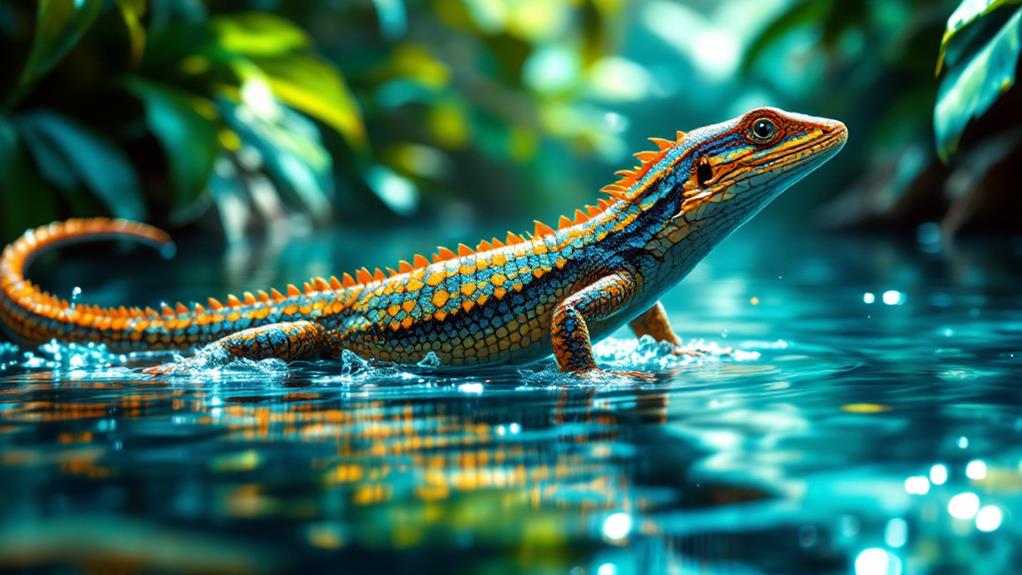
Some might marvel at how evolution has fine-tuned certain animals to walk on water, showcasing nature's ingenuity. This ability is no accident; it's the result of millions of years of natural selection. As environmental pressures shaped diverse ecosystems, certain species developed unique adaptations. Consider the basilisk lizard, often referred to as the "Jesus lizard" for its ability to sprint across water surfaces. Its long toes and lightweight body, coupled with rapid leg movements, allow it to exploit this niche skill, escaping predators and accessing food sources others can't reach.
For insects like water striders, environmental pressures have led to the evolution of hydrophobic legs that repel water. These specialized limbs distribute their weight over a larger surface area, preventing them from sinking. Through natural selection, they've developed microscopic hairs and a unique leg structure that provide the necessary buoyancy and stability to glide effortlessly across water.
Every step an animal takes on water is a demonstration of the relentless force of evolution. By adapting to specific challenges in their environments, these creatures illustrate the power of natural selection in crafting remarkable survival strategies. You can see how these adaptations are a perfect blend of form and function.

